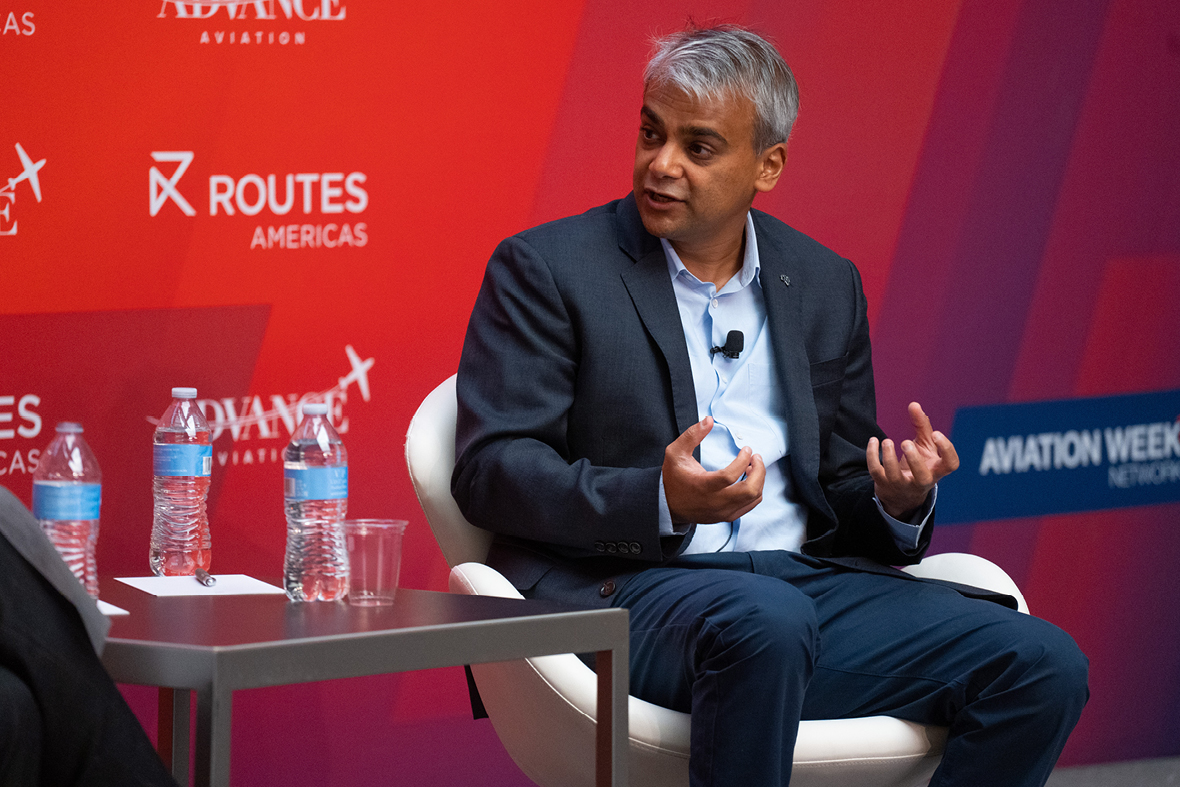Azul Brazilian Airlines, celebrating its 15th year in service, has survived financial distress to grow swiftly to 158 cities using multiple fleet types, which is uncharacteristic for a low-cost airline.
Azul’s fleet has reached 148 jets with 80 more on order. It began operating long-range Airbus A350 aircraft during September 2022 and mainly uses the aircraft to fly from Brazil to Orlando, Fort Lauderdale, Lisbon and Paris. “We’ve grown the overall [Brazilian] market by double,” said Azul President Abhi Shah.
Azul has had a code share with United Airlines since 2014. It purchased Brazilian regional carrier TwoFlex during 2020 to feed Azul from 80 destinations using small nine-passenger Cessna Caravans. Azul has now garnered a 32% share of the large Brazil market.
After a rough pandemic, Azul in March 2023 reached agreements with 90% of its aircraft lessors, relieving tremendous financial pressure, stamping out bankruptcy rumours and allowing the airline to focus on growing its destinations. Azul leases 85% of its 161-aircraft fleet, and the restructuring removed US$573 million from its obligations.
The airline expects to grow 15% in 2023 and recently launched Sao Paulo–Paris Orly as a new market.
“More than half the traffic is connecting, and 50-60 cities we serve never had airline service before,” said Shah. Sao Paulo Campinas Airport, its largest hub, now hosts 180 departures daily to 62 destinations.
“The key to our success has been competitiveness and connections,” Shah said. “We’ve taken the model of flexible fleet types to make it successful.”
Shah said one route restarted after the pandemic “with a nine-passenger Cessna Caravan, then we changed it to a [70-passenger] ATR-72 with growth, and now we offer a double-daily Airbus A320 on the route”.
Shah said Azul does not stimulate traffic through price, but with connectivity. “Costs are high. Imagine the cost of fuel in remote areas,” he said. “But if a boat takes you three days, our new route can fly you there in two hours.”
Azul now operates 11 widebody aircraft, a mix of A330s and A350s. “You hear about so many low-cost, long-haul airlines not working. You need to know your mission and be disciplined,” said Shah. Paris Orly airport currently has no nonstop flights to South America, and Azul believes it therefore offers Paris service to all of Brazil. “There is demand,” Shah said.
Azul currently has 20% of its capacity in international markets, and Shah said this would not rise above 25%. Prior to its expansion, Azul had no competition on 80% of its routes. After expansion, that figure remains 80%.
Azul has also developed a new logistics group inside the airline with two Boeing 737s and five Embraer 195s in all-cargo configuration. “We didn’t just create a cargo organisation, we wanted to own logistics end-to-end,” Shah said. “We are now the largest logistics provider in Brazil.”
Meanwhile, Azul’s new vacations business doubled from 2020 to 2022 and now offers 2,000 weekend flights solely for vacation packages.
“Everything we do every day is to extend our competitive advantage,” Shah said, noting that every single new flight attendant – 450 in total – came from within the airline, mostly from call centres and administration.
“Culture is every single interaction, every single day,” explained Shah, describing how he seeks to differentiate Azul from competitors. Carefully maintaining the friendly Azul brand is always a priority and extends to the airline’s treatment of its employees. For instance, Azul Chief Executive John Rodgerson personally called everyone in the company who had Covid, Shah said.
Azul’s most remarkable feat may not have come from management at all, though: during the pandemic, 11,000 staff gave up some or all their salary voluntarily to ensure the airline survived.



